Excerpted from "The American Gardener" magazine - Jan/Feb 2016
New Plants for 2016
For Dendranthema fans (otherwise known as Korean mums or Hardy mums – these are the ones that come back every year but can be quite floppy and really should be pinched at least once) there’s a new, lower-maintenance cultivar. Dendranthema ‘Pumpkin Igloo’ has a “non-fading vibrant orange flower color on a compact branching plant that doesn’t need to be pinched”. Does well down to Zone 5. If you’ve not used these, they bring amazing flower power to the late summer/early fall perennial border - plants are covered in orange daisy flowers for over a month. They attract masses of late-season pollinators and are deer-resistant.
Dendranthemum 'Pumpkin Igloo' flower color really pops with other early-fall flowers and foliage.
'Perovskia atriplicifolia (Russian Sage) is drought-tolerant and deer-resistant but can be a little too wild for some gardens. ‘Denim ‘n Lace’ is a new cultivar with shorter upright stems that won’t flop over.
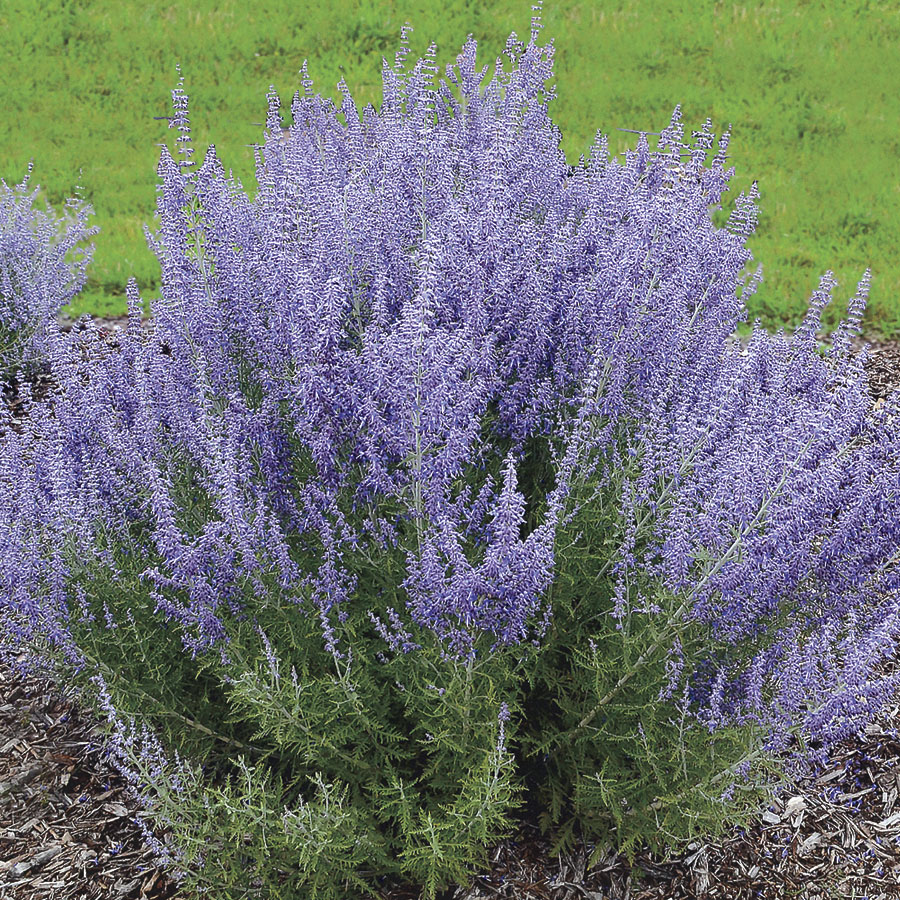
Perovskia atriplicifolia 'Denim 'n Lace' is more compact and makes a bigger flower statement than the species - but it reads more purple catmint-colored than the bluer color of the species.
Heliopsis helianthoides var. scabra (False sunflower or Oxeye Daisy) also has a sturdier new cultivar called ‘Prima Ballerina’. This is a native perennial for the back of the border with bright yellow daisy-like flowers that attract pollinators. Heliopsis flowers from July to October and is surprisingly deer-resistant in most locations I’ve used it. It’s a drought-tolerant native (once established) and can tolerate clay soil. ‘Prima Ballerina’ tops out at only about 40 inches tall and does well to Zone 3.
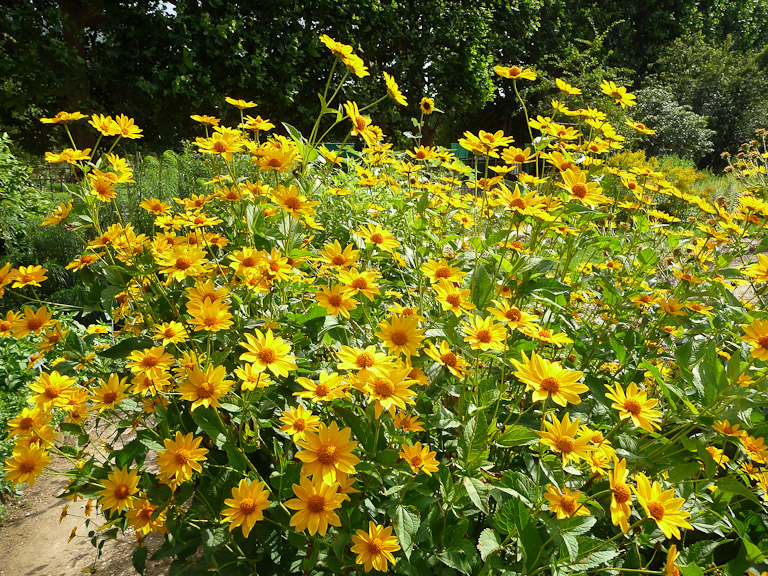
Heliopsis is perfect for the back of a border - it even works in front foundation plantings.
If you’re looking for something different to put in annual containers this year, look into Echeveria gibbiflora Wildfire™. This is a 10-inch tall rosette-forming succulent with ruffled, red-edged foliage serves a dramatic visual punctuation and and would look great with ground-cover sedums in a dry, desert-y full-sun container.
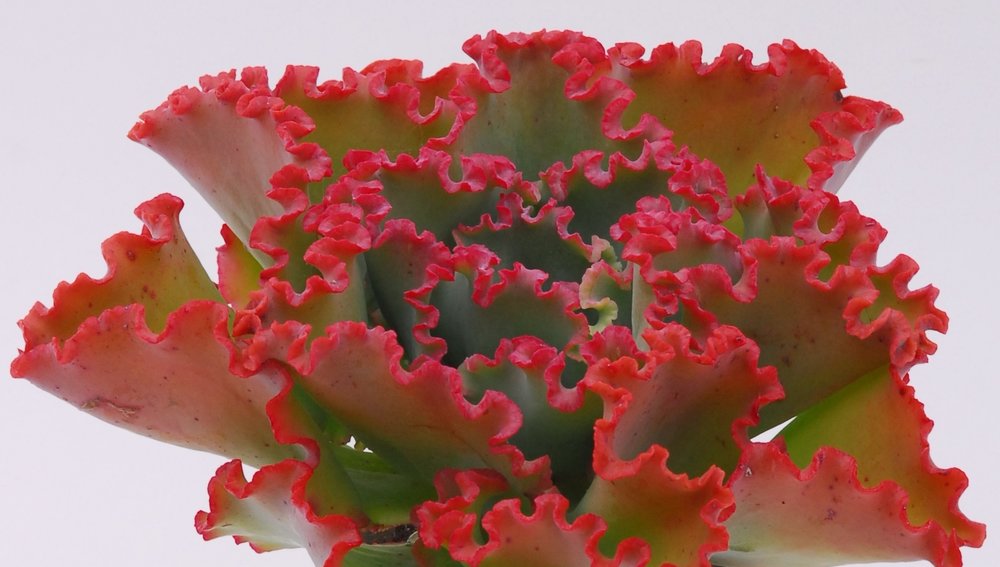
This Echeveria will make the blue-toned varieties pop!
Don’t be afraid to try some of the new roses – they really are much easier to grow and maintain nowadays if you choose the disease-resistant repeat-blooming varieties. Knock-Out roses are in every median strip nowadays – we need a step up from them in our gardens! There’s a new David Austin rose in 2016 called Rosa ‘Olivia Rose Austin’ which David Austin has called “possibly the best rose that we have introduced to date. It is also one of the most disease-resistant roses we know.” It’s a 3-ft tall shrub rose that blooms prolifically with double/full old-rose style flowers and a strong fruity fragrance.
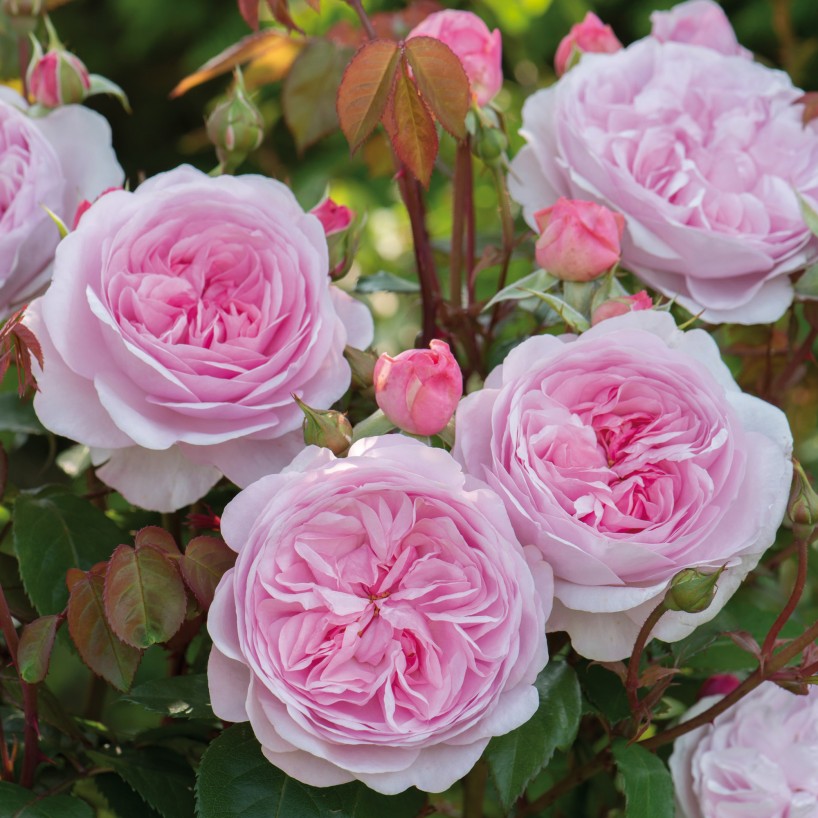
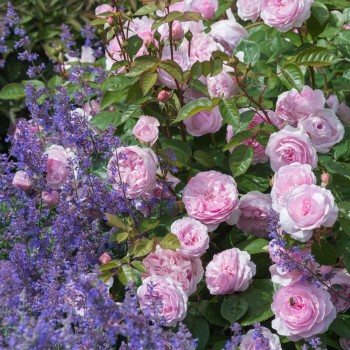
Rosa 'Olivia Rose Austin'
I hope everyone has discovered the wonderfulness of highbush blueberries (Vaccinium corymbosum). For those without deer, blueberries are practically an ideal shrub. They stay fairly compact (about the size of boxwood or spirea) with an interesting branching pattern. They have delicate and beautiful flowers in spring, followed by berries that birds love (you can eat them too if you want) and then show-stopping red-orange-burgundy fall foliage color. They don’t mind a bit of shade, and they tolerate wet feet. And they’re native – what’s not to love?! There’s a new series of compact shrubs called BrazelBerries® that includes blueberry varieties. The new variety for 2016, ‘Perpetua’, is described as “a true double-cropping blueberry, setting fruit in midsummer and then again in fall. ’Perpetua’s dark green leaves grow in a twisted form and are flushed deep red in fall, while the new canes turn bright yellow and red”. Does well to Zone 4.

Brazelberry 'Perpetua' is a compact blueberry cultivar that is self-pollinating.


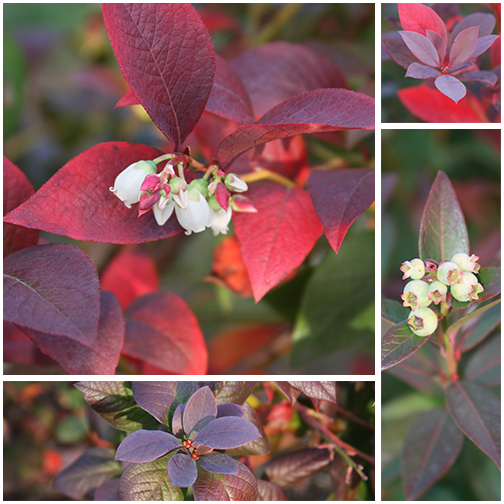
The wonderfulness of high bush blueberries! This is the 'Perpetual' Brazelberry cultivar. Here you can see the flowers for the fall berry crop together with the fall-colored foliage.
